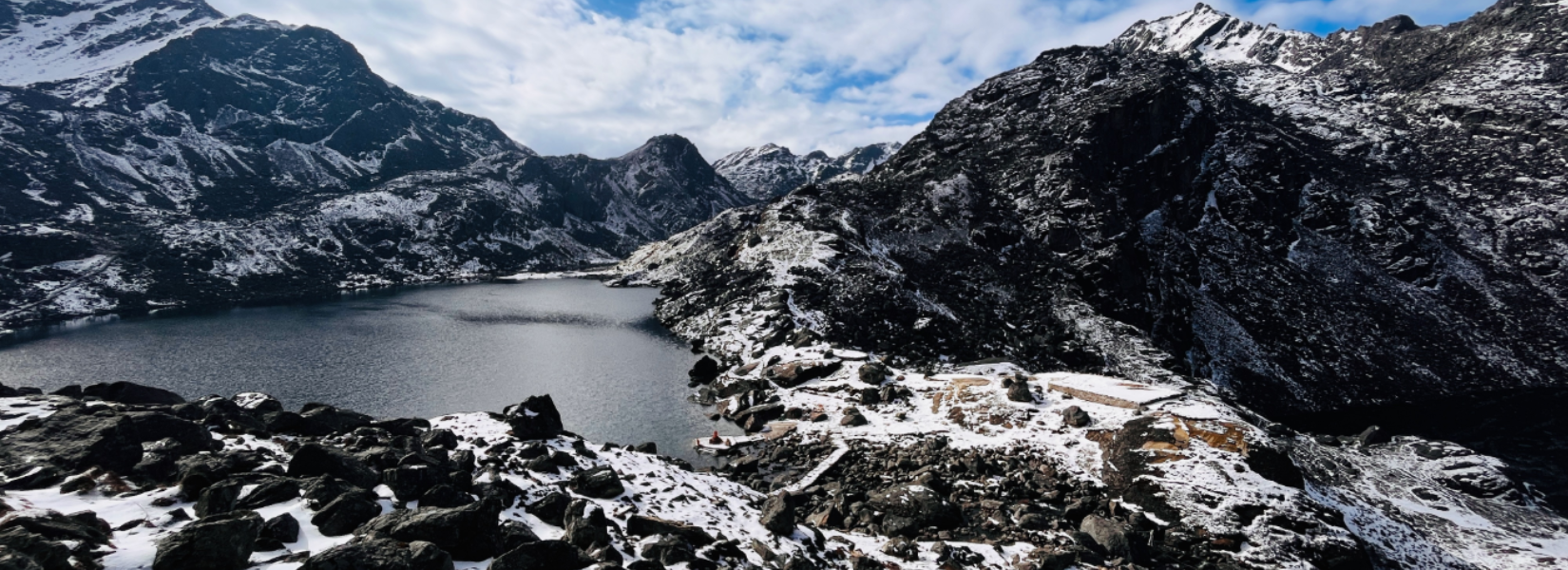About Gosaikunda Pilgrimage Tour
The Gosaikunda Pilgrimage Tour takes visitors to one of the most sacred Hindu sites in Nepal. The Gosaikunda Lake is nestled in the Langtang National Park at an altitude of about 4380 meters. This sacred lake is surrounded by rugged mountains, is believed to have been created by Lord Shiva and is an important destination for Hindu devotees, especially during the full moon festival in August. The trek to Gosaikunda offers stunning views of the Himalayas, including peak like Langtang Lirung, Ganesh Himal and Manaslu, making it not only a spiritual journey but also a visual treat.
The trek itself is a challenging yet rewarding adventure that typically starts from the town of Dhunche, which is accessible by road from Kathmandu. From Dhunche, trekkers ascend through lush forests, charming Tamang villages, and steep, rocky trails. As they make their way toward the sacred lake, they pass through varied landscapes, including alpine meadows and rugged terrain, gradually gaining altitude. Along the way, trekkers can enjoy the warm hospitality of locals, learn about the area’s cultural heritage, and witness the unique flora and fauna of the region, such as rhododendron forests and diverse wildlife.
Upon reaching Gosaikunda, pilgrims and trekkers alike can take part in religious ceremonies, bathing in the holy water, or simply enjoy the tranquility of the area. The lake is surrounded by several smaller ponds, each with its own legend, and offers a serene environment for contemplation and reflections. After spending time at the lake, trekkers typically descend along the same route, though some choose to extend their journey to the neighboring Helambu region. The Gosaikunda Pilgrimage Tour is a deeply spiritual experience, blending natural beauty, physical challenges and cultural exploration, which make it an unforgettable journey.
Highlights
- explore one of the most sacred Hindu sites in Nepal
- nestled in the Langtang National Park at an altitude of about 4380 meters
- glimpse of stunning views of the Himalayas, including peak like Langtang Lirung, Ganesh Himal and Manaslu
- trekkers can enjoy the warm hospitality of locals, learn about the area’s cultural heritage
- witness the unique flora and fauna of the region, such as rhododendron forests and diverse wildlife
- deeply spiritual experience, blending natural beauty, physical challenges and cultural exploration
Useful Information
Transportation
The transportation for the Gosaikunda pilgrimage tour typically begins with a drive from Kathmandu to Dhunche, the nearest road access point to Gosaikunda. This journey usually takes about 7 to 8 hours by bus or private vehicle, with options for jeeps offering a faster, more comfortable ride. Once in Dhunche, the pilgrimage continues foot, as Gosaikunda is not accessible by road. The trek to the sacred lake takes about 3 to 4 days, passing through villages like Sing Gompa and offering spectacular views of the Himalayas. Along the route, trekkers can also hire potters or mules to carry their belongings, easing the journey.
For those short on time or preferring a more convenient option, helicopter services are available from Kathmandu directly to Gosaikunda, skipping the lengthy trek. This combination of road travel, trekking, and optional helicopter transport makes Gosaikunda accessible to a variety of pilgrims and trekkers.
Best time to visit the Gosaikunda
The best time to visit Gosaikunda, a sacred alpine lake in Nepal, is typically during the pre-monsoon (spring) and post-monsoon (autumn) season.
Spring season (March to May): This season offers mild weather with clear skies and moderate temperatures. The landscape is lush and green, and the surrounding rhododendron forests are in full bloom, adding a beautiful color palette to the trek.
Autumn season (September to November): This season is considered the peak trekking season. The weather is stable, with clear skies and breathtaking views. It is slightly cooler than spring, but perfect for trekking, and the trail is less muddy compared to the monsoon season.
Both seasons offer the best chance for clear views and comfortable trekking conditions. However, if you are looking for fewer crowds, spring can be a slightly quieter option compared to the busy autumn months.
